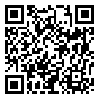Volume 6 -
MEJDS (2016) 6: 158 |
Back to browse issues page
Download citation:
BibTeX | RIS | EndNote | Medlars | ProCite | Reference Manager | RefWorks
Send citation to:



BibTeX | RIS | EndNote | Medlars | ProCite | Reference Manager | RefWorks
Send citation to:
Nematkhah M, Hossein Khanzadeh A A, Kafi Masouleh M. The Effectiveness of Clay Therapy on Reducing the Aggression of boys suffering from Attention Deficit Hyperactivity Disorder (ADHD). MEJDS 2016; 6 :158-163
URL: http://jdisabilstud.org/article-1-567-en.html
URL: http://jdisabilstud.org/article-1-567-en.html
1- University of Guilan
Abstract: (7327 Views)
Abstract
Objective: Attention Deficit/Hyperactivity Disorder is the most common neurodevelopmental disorder during childhood and it is important to find an effective treatment to reduce its cues. The present paper aims to examine the effect of clay therapy on aggression in elementary school male students suffering from attention deficit hyperactivity disorder.
Methods: The method was experimental and the design was pre-test post-test. The statistical population was all the elementary school male students with attention deficit hyperactivity disorder in Rasht province during the educational year of 2013-2014. 30 students were selected through purposive sampling. Then they were randomly assigned to control and experiment groups. After pre-test, the experimental group underwent 11 sessions of 60 minutes clay therapy during 5 weeks, while the control group received no intervention. The instrument used in the study was Shahim (2006) Overt and Relational Aggression Scale. The Data was analyzed by covariance analysis
Results: Findings indicate that clay therapy reduced the Total aggression scores (p>0.01) and also sub-scales including Physical, verbal and Relational Aggression (p<0.001) in elementary school male students with attention deficit hyperactivity disorder.
Conclusion: Mud play, in conjunction with other treatment methods, can be used in the treatment of Child Attention Deficit Hyperactivity Disorder (ADHD).
Objective: Attention Deficit/Hyperactivity Disorder is the most common neurodevelopmental disorder during childhood and it is important to find an effective treatment to reduce its cues. The present paper aims to examine the effect of clay therapy on aggression in elementary school male students suffering from attention deficit hyperactivity disorder.
Methods: The method was experimental and the design was pre-test post-test. The statistical population was all the elementary school male students with attention deficit hyperactivity disorder in Rasht province during the educational year of 2013-2014. 30 students were selected through purposive sampling. Then they were randomly assigned to control and experiment groups. After pre-test, the experimental group underwent 11 sessions of 60 minutes clay therapy during 5 weeks, while the control group received no intervention. The instrument used in the study was Shahim (2006) Overt and Relational Aggression Scale. The Data was analyzed by covariance analysis
Results: Findings indicate that clay therapy reduced the Total aggression scores (p>0.01) and also sub-scales including Physical, verbal and Relational Aggression (p<0.001) in elementary school male students with attention deficit hyperactivity disorder.
Conclusion: Mud play, in conjunction with other treatment methods, can be used in the treatment of Child Attention Deficit Hyperactivity Disorder (ADHD).
Type of Study: Original Research Article |
Subject:
Rehabilitation
References
1. Association AP, others. Diagnostic and statistical manual of mental disorders (DSM-5®). American Psychiatric Pub; 2013.
2. Antshel KM, Olszewski AK. Cognitive behavioral therapy for adolescents with ADHD. Child Adolesc Psychiatr Clin N Am. 2014;23(4):825-842. [DOI:10.1016/j.chc.2014.05.001]
3. Ende G, Cackowski S, Van Eijk J, Sack M, Demirakca T, Kleindienst N, et al. Impulsivity and Aggression in Female BPD and ADHD Patients: Association with ACC Glutamate and GABA Concentrations. Neuropsychopharmacology. 2016;41(2):410-8. [DOI:10.1038/npp.2015.153]
4. Giesbrecht GF, Leadbeater BJ, Macdonald SW. Child and context characteristics in trajectories of physical and relational victimization among early elementary school children. Dev Psychopathol. 2011;23(1):239-252. [DOI:10.1017/S0954579410000763]
5. Derman MT, Başal HA. The Impact Of Empathy Education Programme Which Was Performed On 10-11 Year Old Children From Different Socioeconomic Levels On The Aggression Level. Procedia-Soc Behav Sci. 2014;141:1049-1053. [DOI:10.1016/j.sbspro.2014.05.176]
6. Etemadi S. The Efficacy of clay therapy on reducing the severity of symptoms of Attention Deficit Hyperactivity Disorder (ADHD) in primary school female students. GMP Review.2015; 18(2): 484-490.
7. Jafari N, Mohammadi MR, Khanbani M, Farid S, Chiti P. Effect of play therapy on behavioral problems of maladjusted preschool children. Iran J Psychiatry. 2011;6(1):37-42.
8. Halperin JM, Healey DM. The influences of environmental enrichment, cognitive enhancement, and physical exercise on brain development: Can we alter the developmental trajectory of ADHD? Neurosci Biobehav Rev. 2011;35(3):621-634. [DOI:10.1016/j.neubiorev.2010.07.006]
9. Barzegary L, Zamini S. The effect of play therapy on children with ADHD. Procedia-Soc Behav Sci. 2011;30:2216-2218. [DOI:10.1016/j.sbspro.2011.10.432]
10. Mohammad Esmaeel E. Play Therapy. First Ed. [Tehran]: Danjeh; 2004, pp: 127-130. [Persian]
11. Rahmani P, Moheb N. The effectiveness of clay therapy and narrative therapy on anxiety of pre-school children: a comparative study. Procedia-Soc Behav Sci. 2010;5:23-27. [DOI:10.1016/j.sbspro.2010.07.044]
12. Hasanpour F, Jalali M, Khazaiee M. The Influence Of clay Therapy on aggression of pre-School Children. Journal of Clinical Psychology.2013; 10(3):139-153. [Persian]
13. Shahim S. Overt and relational aggression among elementary school children. Psychol Res. 2006;9(2):27-44. [Persian]
14. Oaklander V. Windows to our children: A Gestalt therapy approach to children and adolescents. USA: Center for Gestalt Development; 1988.
15. Janatian S, Nouri AA, Shafti S, Moulavi H, Samavatian H. Effectiveness of play therapy on the bases of cognitive behavior approach on severity of symptoms of Attention Deficit/Hyperactivity Disorder (ADHD) among primary school male students aged 9-11. J Behav Sci. 2008;6(9):109-18. [Persian]
16. Ray DC, Schottelkorb A, Tsai M-H. Play therapy with children exhibiting symptoms of attention deficit hyperactivity disorder. Int J Play Ther. 2007;16(2):95-111. [DOI:10.1037/1555-6824.16.2.95]
17. Panksepp J. Can PLAY diminish ADHD and facilitate the construction of the social brain? J Can Acad Child Adolesc Psychiatry. 2007;16(2):57-66.
18. Zolmajd A, Borjali A, Arian K. Impact of Sand Play Therapy on Reduction of Aggressive Behaviors. J Except Child. 2007;7(2):155-168.
19. Or MB. Clay sculpting of mother and child figures encourages mentalization. Arts Psychother. 2010;37(4):319-327. [DOI:10.1016/j.aip.2010.05.007]
Send email to the article author
| Rights and permissions | |
 |
This work is licensed under a Creative Commons Attribution-NonCommercial 4.0 International License. |




